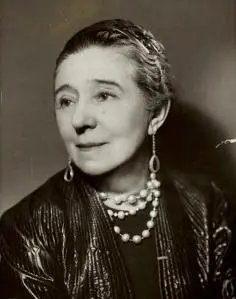
Jeanne Lanvin, a name that evokes grace, artistry, and timeless beauty, remains one of the most celebrated figures in the world of haute couture. Although her legacy stretches over a century, the French designer’s influence on modern fashion is still deeply felt. Lanvin’s career started during a transformative period in the fashion industry, and she stood out not just for her designs but for her ability to build a brand that incorporated a unique blend of luxury, creativity, and innovation.
Table of Contents
Early Life and Beginnings in Fashion
Jeanne Lanvin was born on January 1, 1867, in Paris, into a modest family. The eldest of 11 children, she began her career at a young age. By the time she was just 16, she had already embarked on a career as a milliner, making hats for Parisian women. She honed her craft while working for some of the most prominent milliners of the time, which sparked her interest in fashion design.
Despite having little formal education, Lanvin’s early exposure to the world of high fashion gave her invaluable skills, and in 1889, at the age of 22, she opened her first boutique on Rue du Faubourg Saint-Honoré, one of Paris’ most fashionable streets.
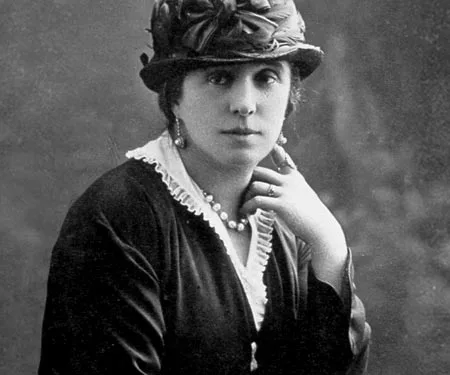
photo/chelseajordanfidm
The Founding of Lanvin: A New Era in Fashion
Jeanne Lanvin’s journey into fashion design was significantly influenced by her daughter, Marguerite. In fact, her early designs were created for her daughter, reflecting a loving bond between mother and child. As Marguerite grew, so did Lanvin’s creative output. Soon, other mothers began noticing her work and requested similar outfits for their children, leading Lanvin to develop a new line of children’s wear.
In 1909, Jeanne Lanvin officially established her fashion house, “Lanvin,” marking the beginning of a new era in haute couture. Her designs were unique in that they reflected a combination of femininity, art, and practicality. While many designers were creating rigid, structured garments, Lanvin introduced softer, more fluid silhouettes, which resonated with modern women.
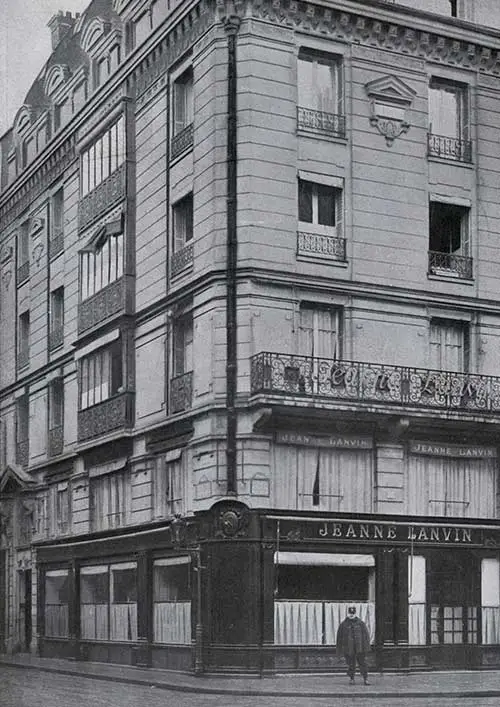
photo/lanvin
Notable Collections and Works
Jeanne Lanvin’s “Robes de Style” is perhaps one of her most enduring contributions to fashion. This style was an alternative to the narrow, figure-hugging dresses that were popular in the 1920s. The Robes de Style featured full skirts and intricate details, evoking a sense of romance and elegance. This style became a symbol of the Lanvin brand and is still referenced by modern designers today.
Lanvin also made her mark on bridal fashion, with her wedding dresses standing out for their luxurious fabrics and intricate embroidery. The blend of simplicity with opulence became a hallmark of Lanvin’s bridal collections.
In the world of menswear, Lanvin Homme emerged as a significant player. Though Jeanne Lanvin initially focused on women and children, the House of Lanvin expanded into menswear in the 1920s, creating elegant and sophisticated suits that echoed her attention to detail.
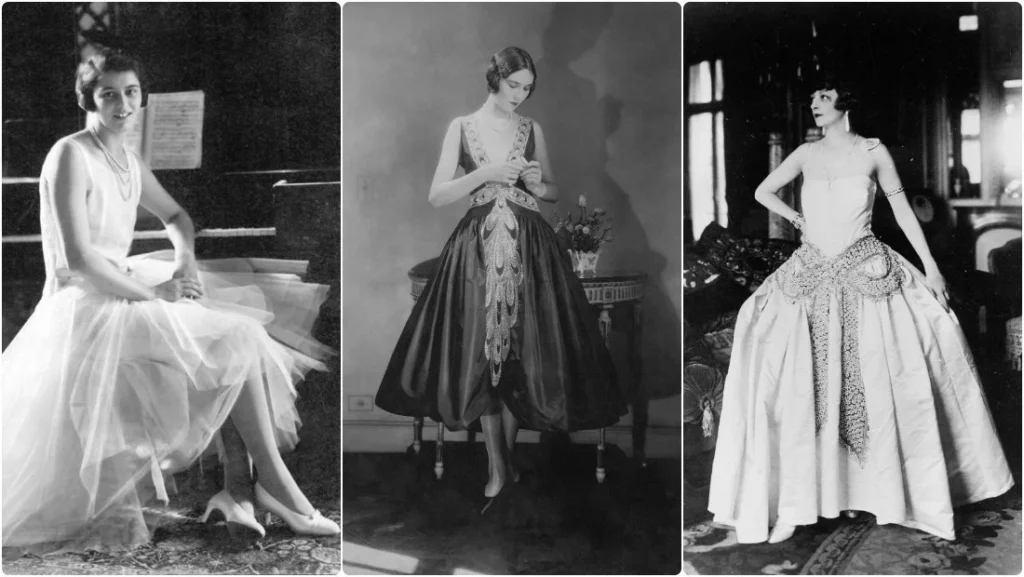
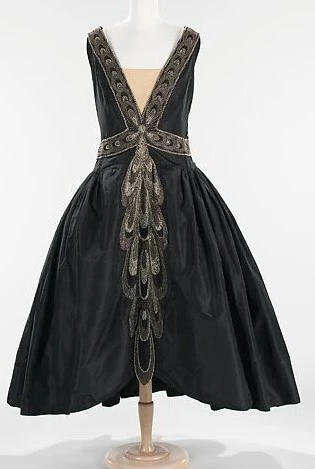
photo/fashionfromhistory
Lanvin’s Distinctive Style
One of the hallmarks of Jeanne Lanvin’s style was her use of color. She was particularly known for a specific shade of blue, known as “Lanvin Blue,” which was inspired by the artwork of Renaissance painter Fra Angelico. This shade became a symbol of her fashion house and was used frequently in her collections. Lanvin also drew inspiration from art, music, and theater, incorporating intricate embroideries, luxurious fabrics, and delicate detailing into her designs.
Her gowns were characterized by their elegance and simplicity, often featuring flowing skirts, intricate beadwork, and light, ethereal fabrics like silk and chiffon. These elements gave her creations a dreamlike quality, setting her apart from other designers of her time.
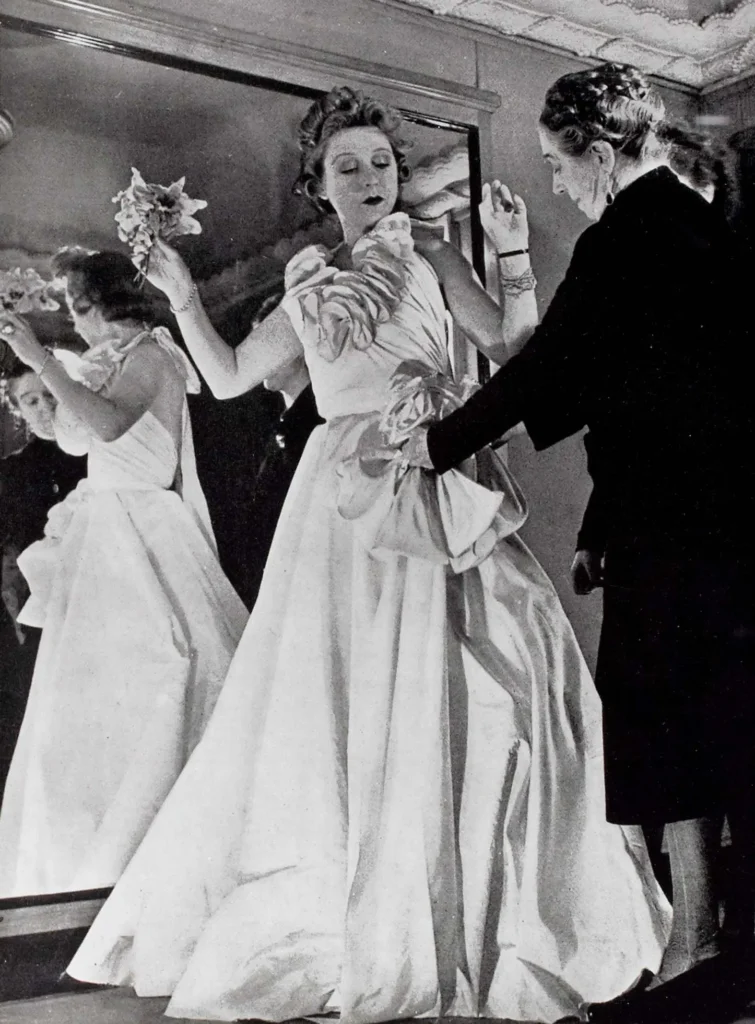
photo/lanvin
The Influence of Art and Culture
One of the key elements that set Jeanne Lanvin apart was her ability to draw inspiration from art and culture. She was particularly influenced by the Art Deco movement, which was flourishing during her time. This style, with its bold geometric patterns, rich colors, and emphasis on luxury, became integral to her design philosophy.
Collaborating with artists, Lanvin was able to merge the worlds of fashion and art, creating unique designs that transcended the norm. This artistic collaboration played a significant role in shaping her collections and gave her brand an avant-garde edge.
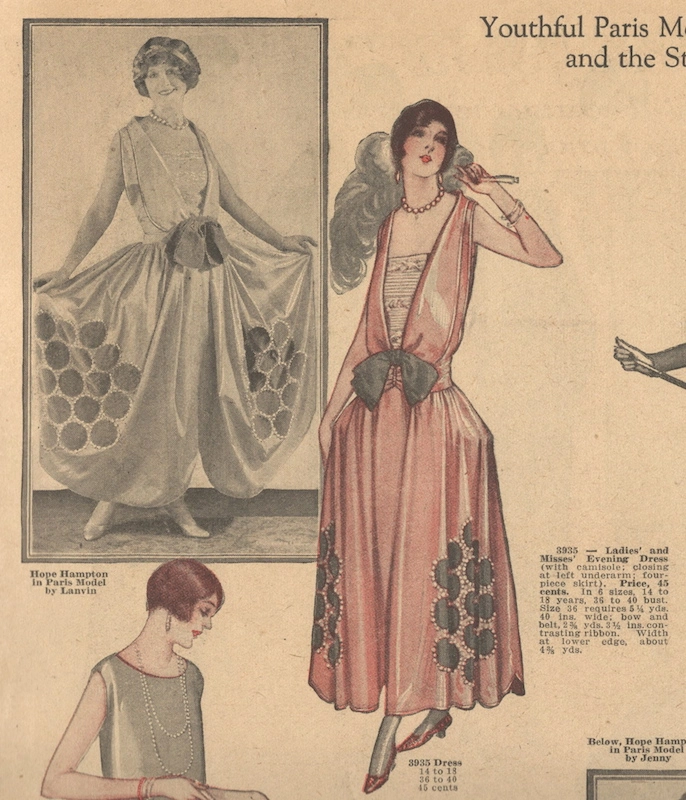
photo/patternvault
The Iconic Lanvin Blue
One of the most recognizable elements of the Lanvin brand is its signature shade of blue, often referred to as “Lanvin Blue”. The color was said to be inspired by the frescoes of Fra Angelico, a 15th-century Italian painter. Jeanne Lanvin was captivated by the serene and luminous qualities of the blue hues in his work, which she translated into her designs.
Lanvin Blue became more than just a color; it became a symbol of elegance and exclusivity. This rich, vibrant blue was woven into many of her collections, establishing it as one of the brand’s iconic features.
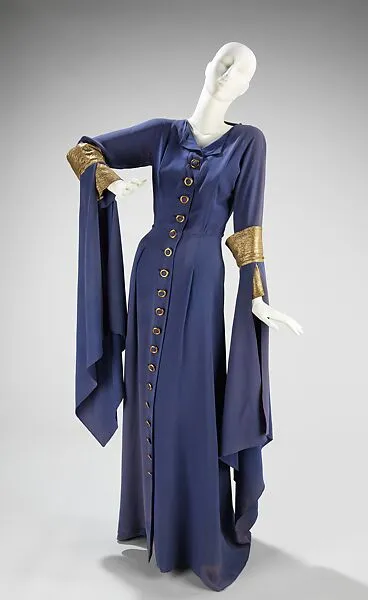
photo/metmuseum
Lanvin’s Perfumes: Arpège and Beyond
Lanvin’s influence wasn’t limited to clothing. In 1927, she launched her now-famous perfume, Arpège, as a tribute to her daughter Marguerite. The name “Arpège” comes from the musical term “arpeggio,” reflecting Marguerite’s love for music. This perfume, with its timeless floral scent, remains one of Lanvin’s most beloved creations.
The success of Arpège helped cement Lanvin’s status as not just a fashion icon but also a visionary in the world of luxury goods.
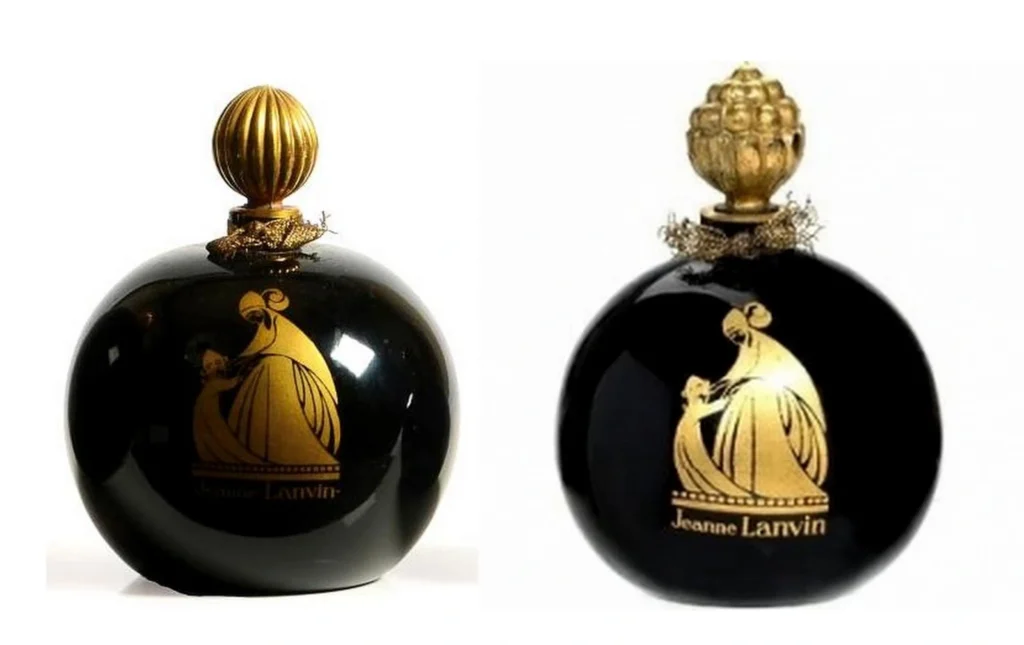
photo/lanvinperfumes
Famous Celebrities and Lanvin
Throughout her career, many famous personalities, including actresses and royals, embraced Jeanne Lanvin’s designs. Her clothes adorned the likes of Marlene Dietrich and Grace Kelly, who were drawn to the timeless elegance and femininity of her creations. These endorsements helped elevate the House of Lanvin to an international stage, making it a go-to brand for those seeking sophistication.
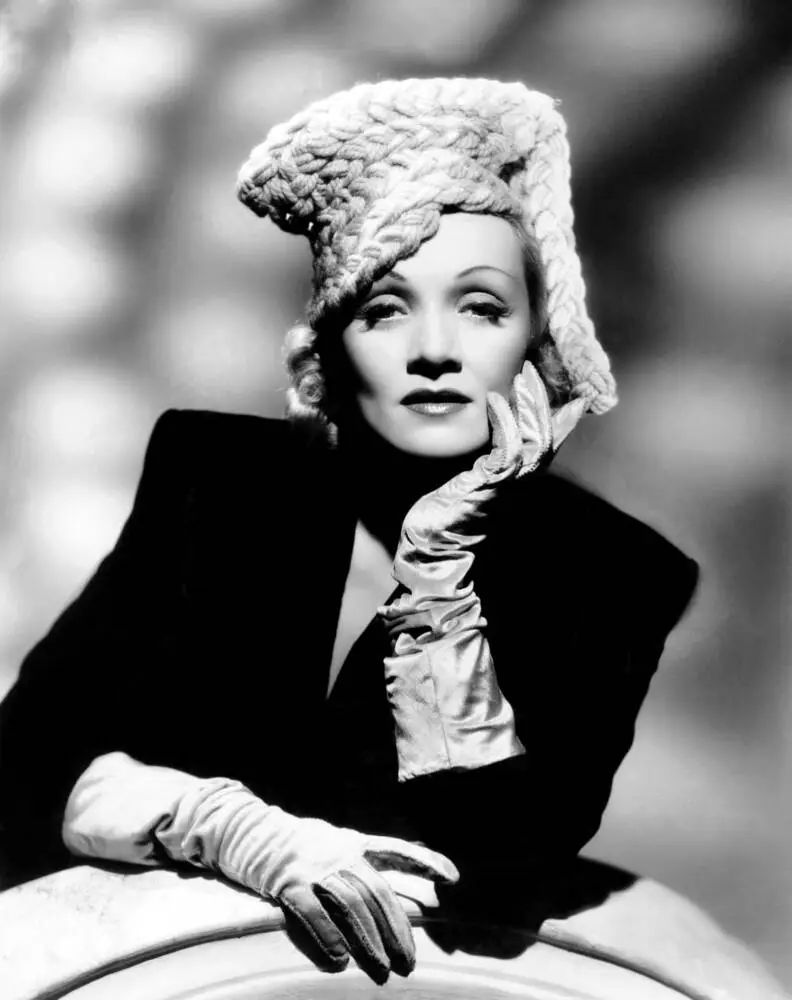
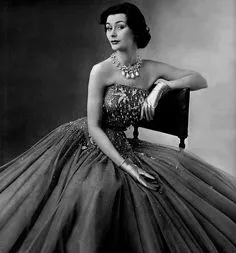
photo/Marlene Dietrich (left)/artphotolimited/Grace Kelly (right)/pinterest
Jeanne Lanvin’s Enduring Impact on Haute Couture
What sets Jeanne Lanvin apart is her ability to create timeless designs that continue to inspire today’s fashion designers. Her attention to detail, passion for luxury, and innovative spirit are reflected in the work of contemporary fashion icons. From Dior to Chanel, many legendary houses have, in some ways, been shaped by Lanvin’s approach to femininity and elegance.
Also Read-Georges Vuitton: The Visionary Behind a Luxury Legacy
The Art Deco Influence on Lanvin’s Creations
Lanvin’s work is often closely associated with the Art Deco movement, a style that emphasized modernism while embracing traditional craftsmanship. Her designs, especially in the 1920s and 1930s, featured geometric patterns, bold embellishments, and luxurious fabrics, all hallmarks of the Art Deco aesthetic.
Motherhood and Fashion: How Marguerite Inspired Jeanne
Marguerite Lanvin was not only Jeanne’s muse but also her partner in many ways. Their close relationship had a profound impact on Jeanne’s work, especially in the realm of children’s fashion. Marguerite’s presence inspired many of Lanvin’s most cherished collections, and she remained at the heart of the fashion house long after her mother’s passing.
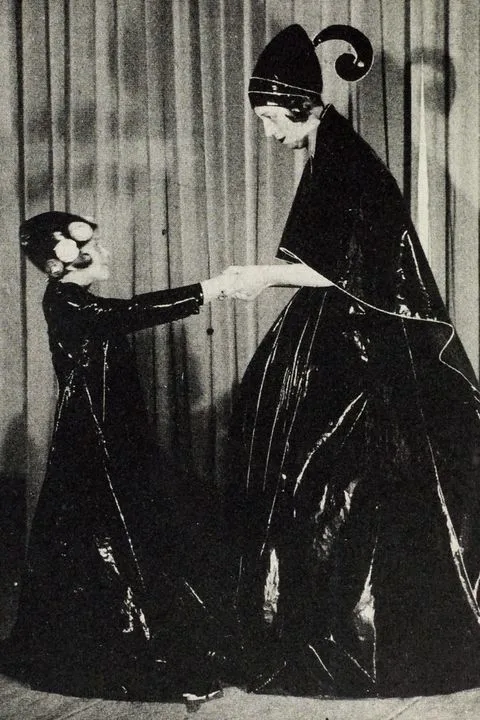
photo/universityoffashion
Growth and Expansion of the Lanvin Brand
As her popularity grew, so did the House of Lanvin. What started as a children’s clothing line soon expanded into women’s haute couture, menswear, and even accessories. Lanvin’s designs were favored not just in Paris but around the world. Her focus on quality, detail, and elegance allowed her brand to grow into one of the most respected fashion houses of
A Brand That Stood the Test of Time
Through wars, economic downturns, and changing trends, the Lanvin fashion house has managed to stand strong. Its ability to evolve while remaining true to its heritage is a testament to Jeanne’s vision. Today, Lanvin continues to produce high-quality, luxurious designs that appeal to both modern and traditional sensibilities.
Leadership Transition After Jeanne Lanvin
Jeanne Lanvin passed away in 1946, but her legacy was carried on by her daughter, Marguerite, who took over the business. Under her leadership, the House of Lanvin continued to thrive, maintaining its reputation for elegance and innovation.
Lanvin in the 21st Century
Today, the Lanvin brand remains a force in the fashion world. While it has evolved to adapt to modern trends, it has never lost sight of Jeanne Lanvin’s original vision. Contemporary designers who have worked with the brand have all paid homage to her legacy, ensuring that her influence continues to shape the fashion landscape.
The Timeless Appeal of Jeanne Lanvin’s Creations
What makes Jeanne Lanvin’s work so enduring? Perhaps it’s her ability to blend innovation with tradition. Her designs were ahead of their time, yet they never lost their sense of elegance and grace. This balance has kept her work relevant for over a century, inspiring new generations of designers and fashion enthusiasts alike.
Legacy of the Lanvin Fashion House
Jeanne Lanvin passed away in 1946, but her fashion house has endured the test of time. After her death, her daughter Marguerite took over the house, ensuring her mother’s legacy continued. Though the brand faced challenges in the decades that followed, it has managed to remain relevant through creative leadership, such as that of designer Alber Elbaz, who reinvigorated the brand in the early 2000s.
Conclusion
Jeanne Lanvin was not just a fashion designer; she was a pioneer, a visionary, and a symbol of timeless elegance. Her work continues to inspire the world of haute couture, and her legacy lives on through her iconic brand. Lanvin’s contribution to fashion, particularly her innovative use of color, design, and her ability to infuse art into clothing, has ensured that her name remains at the forefront of luxury fashion.
FAQs
- What inspired Jeanne Lanvin’s designs? Jeanne Lanvin was inspired by her daughter, Marguerite, as well as art, culture, and the world around her. Her designs reflected a deep appreciation for femininity and elegance.
- What is Lanvin Blue? Lanvin Blue is a rich shade of blue that Jeanne Lanvin used frequently in her collections. The color was inspired by the works of Renaissance painter Fra Angelico.
- What is the significance of the Arpège perfume? Arpège was created by Jeanne Lanvin as a tribute to her daughter. It remains one of the most famous perfumes in the world and is a symbol of Lanvin’s commitment to luxury and femininity.
- How did Jeanne Lanvin influence modern fashion? Lanvin’s emphasis on fluidity, femininity, and the use of art in fashion influenced many designers and helped shape the trajectory of modern haute couture.
- Is Lanvin still relevant today? Yes, Lanvin remains a respected name in the fashion industry. Its designs continue to attract both modern fashion lovers and those who appreciate classic elegance.
One thought on “Jeanne Lanvin: A Legacy of Timeless Elegance”